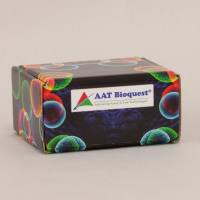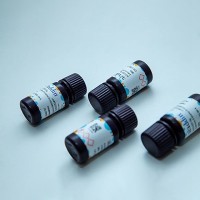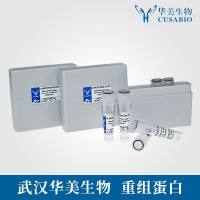Small scale His-Tag fusion protein purification under denaturative conditions
互联网
<center> <p> <b><font color="#cc6600"><font>Small scale His-Tag fusion protein purification under denaturative conditions</font> </font> </b></p> </center>
Introduction
High levels of expression of recombinant proteins in a bacterial system can lead to the formation of insoluble aggregates, usually known as inclusion bodies (IB).
6M Guanidine-HCl (GuHCl), 8M Urea or other strong denaturants can be used to completely solubilized IB. Since under denaturating conditions the His tag is completely exposed, it will facilitate the binding to Ni columns. For most biochemical studies, protein have to be renatured and refolded, and this can be done in the column itself before elution or after elution.
<big><big>Aliquot of Cell Pellet after Induction </big> </big>
The idea is to aliquot cells after induction, and keep at -80ºC enough cell pellet samples for optimization of small scale purification procedure and further scale-up. Once you set up the best purification conditions at low scale, you can scale-up the procedure.
1) Grow 1L culture
2) Induce (IPTG, salt induction, etc. etc.)
3) Spin cell culture 10min 8000rpm 4ºC, discharge supernatant
4) Resuspend cell pellet at 4ºC very gently with 100ml cold PBS buffer. Aliquot as following:
a) 10 tubes (1.5ml plastic tubes) with 1ml suspension (it means 10ml original culture per tube);
b) 4 tubes (15ml plastic tubes) with 10ml suspension (it means 100ml original culture per tube)
c) 1 tube (50ml plastic tube) with 50ml suspension (it means 500ml original culture).
5) Spin 10min 8000rpm 4ºC, discharge supernatant
6) Keep cell pellet at -80ºC
Equilibration of Ni-NTA agarose
Place 50ul beads (100ul suspension) of Ni-NTA agarose beads in 1.5ml plastic tube.
Wash with 2 x 1.5ml H2 O and 2x 1.5ml equilibration buffer (washing: mix, spin 3min 3500rpm, discharge supernatant).
Lysis buffer: 50mM Na2 HPO4 pH 8.0, 0.3M NaCl, 1mM PMSF (or protease inhibitor cocktail for bacterial cells #P-8849 from Sigma) and strong denaturant as 6M Guanidine-HCl (GuHCl) or 6 to 8M Urea
Optional additives to the lysis buffer
a) 1mM PMSF or protease inhibitor cocktail 1:200 (cocktail for bacterial cells #P-8849 from Sigma)
b) Dnase 100U/ml or 25-50ug/ml (SIGMA DN-25). Incubate 10min 4°C in the presence of 10mMMgCl2
Equilibration buffer: 6 to8M Urea, 50mM Na2 HPO4 pH 8.0, 0.5M NaCl
Washing buffer: 6 to8M Urea , 50mM Na2 HPO4 pH 8.0, 0.5M NaCl
Elution buffer: 6 to8M Urea , 20mM Tris pH 7.5, 100mM NaCl, and appropriate imidazole concentrations.
Limitations
Do not exposed Ni matrices to reducing agents as DTT or DTE ( you can use ßME up to 20mM); chelating agents as EDTA and EGTA; NH4 + buffers and amino acids as Arg, Glu, Gly or His.
1 Resuspend pellet of 10ml bacterial culture (or 100ml bacterial culture for very low expression level) in 1ml lysis buffer
2 Prepare lysis buffer containing urea 6 to 8M or Guanidine-HCl 6M (try 8M of Urea first, and if protein is soluble titer down in the next experiments till urea concentration till minimal urea is required for protein solubilization)
3 Sonicate on ice 3 x 20 seconds (depends of the sonicator)
5 Transfer supernatant into clean tube: crude extract (keep 40µl for PAGE-SDS)
see Equilibration of Ni-NTA agarose )
7 Add the crude extract to the beads and incubate 4°C / 1h (swirl)
8 Spin 3min 3500rpm. Dicharge unbound material (keep 40µl for PAGE-SDS)
9 Wash 3x1ml with wash buffer with appropriate urea concentration. Washing: mix, spin 3min 3500rpm, discharge supernatant (keep 40µl for PAGE-SDS)
10 Wash 2x1ml with wash buffer + 10mM imidazole (keep 40µl for PAGE-SDS)
11 Elute with 2x100µl elution buffer + 100mM imidazole (keep 40µl for PAGE-SDS)
12 Final elution : 2x100µl 250mM imidazole (keep 40µl for PAGE-SDS)
13 Run on PAGE-SDS gel 5µl of crude extract and unbound material, and 13µl of the wash and elution fractions.
Analysis of results - Troubleshooting
If protein does not bind to the Ni-NTA resin , check the integrity of the His tag by western blot using anti-polyhistidine antibodies, or do N-terminal sequencing in the case of N-terminal tags. Try to work at 4°C all the time using protease inhibitors during lysis.
If target protein elute with protein contaminants try the alternative protocol with increasing Imidazol concentration. Or reduce amount of Ni-NTA resin. Or try additives as ß ME, glycerol, detergents or more NaCl in the washing / elution buffers.
If eluted protein seem to be degraded try to work at 4°C all the time and use protease inhibitors during lysis.
If the protein does not elute from the column (protein is attached to the column) use higher Imidazol concentrations (up to 1M).
Alternative protocol if target protein is not pure enough
Perform parallel purification procedures where you include 10, 20, 30, 40 or 50mM imidazole in the lysis, binding and washing buffer.
Elute directly with 3x100ul elution buffer + 250mM Imidazol.
Check eluted proteins on PAGE-SDS. Expect lower yields but higher purification by increasing the Imidazol concentration







